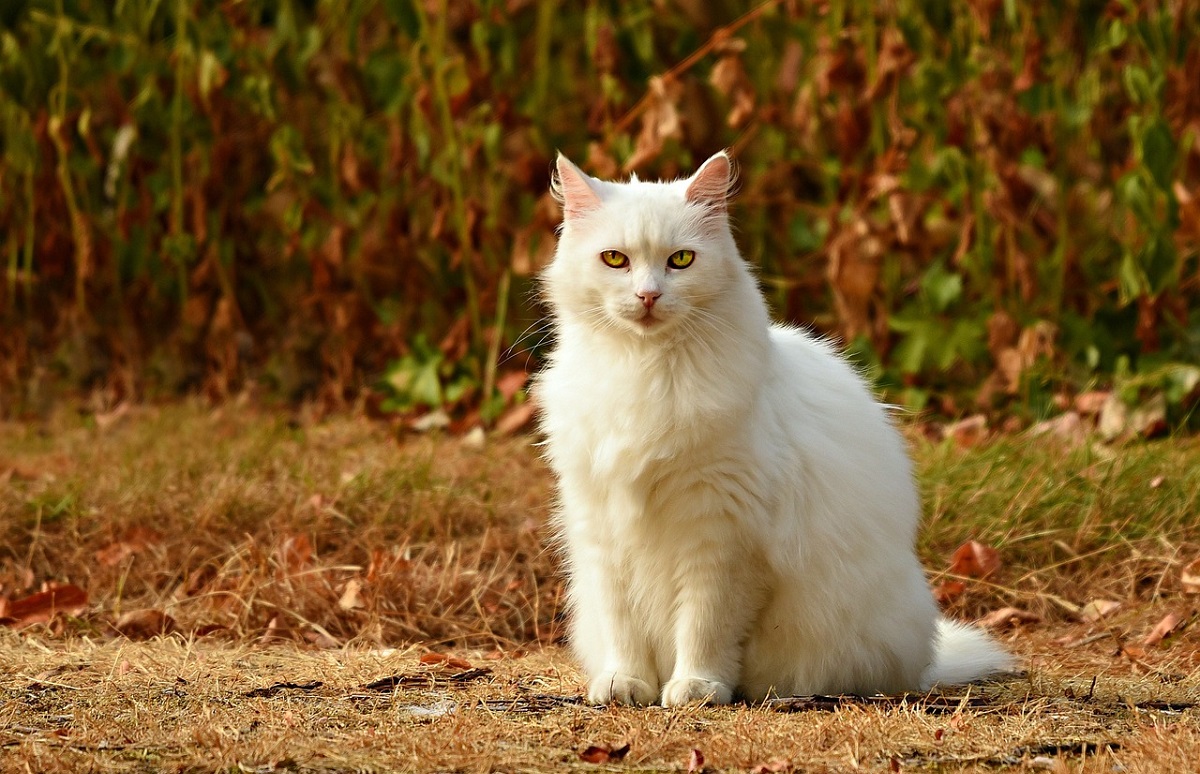Calico, tabby, mouser, feline – All words for those beloved beings we know and love …cats! You may think you know everything possible there is to know about this creature, but we’re here to give you cat facts that may surprise you.
These loving yet mysterious animals are known as finicky, which isn’t a bad word. It means being fussy about one’s needs or requirements. And even human beings are similar to an extent.
Other not-so-complimentary monikers given to cats are “aloof,” “unpredictable,” and “sneaky.” But we’re here to share the opposite behavior of kitties as: Companion animals, highly affectionate, and loyal friends.
Fascinating and agile, they’re extremely intelligent and give as much as they receive. So come along as we explore the intricacies of cats. We’re just as curious as they are.
10 Most Intriguing Facts About Cats
- The genome of cat is 95.6% similar to that of tiger
- The longest cat on record measured 48.5 inches in length
- Cats are capable of jumping up to six times their own length
- The sleep time of cats is around 12 to 16 hours a day
- Female cats get sexually mature at the age of 4 months
- Cats have around 100 different vocalizations
- Each cat possesses a distinctive nose print
- Cats are the only mammals who don’t taste sweet
- The richest cat, Blackie, had a £7 million ($12.5 million) fortune
- Cats spend almost one-third of their lives cleaning themselves
Cat Facts
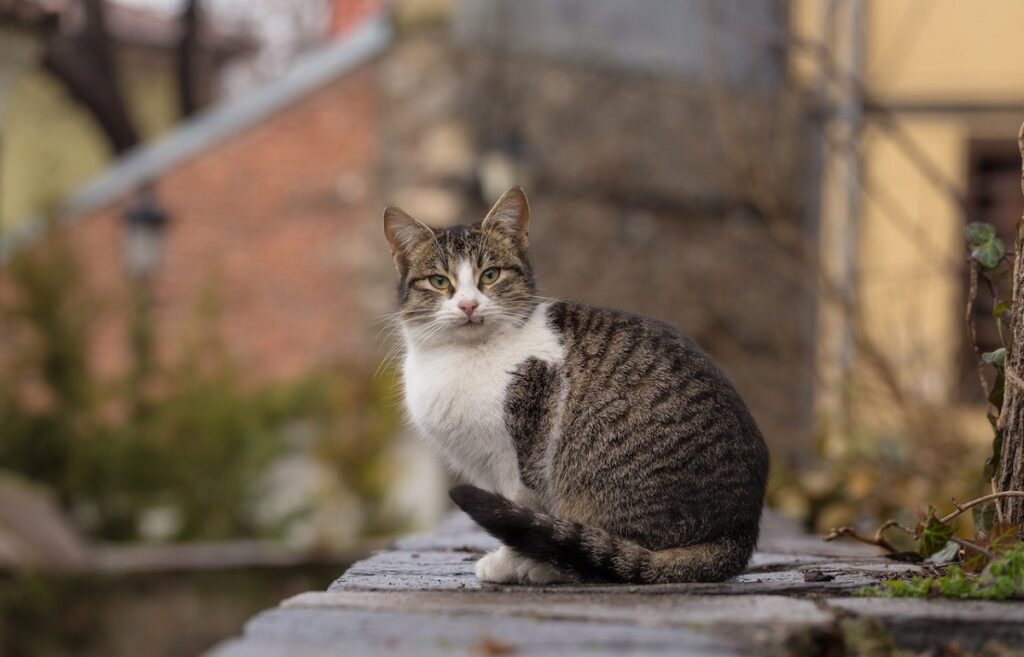
This might be shocking, but first, we’re going to talk about how climate change affects cats. Studies have been done on felines (and canines) to see whether climate change or global warming affects pets. (source)
They learned that excessive temperatures could greatly increase pre-existing behavioral problems in cats and dogs. Additionally, extreme temps, wildfires, and torrential rains can stir up parasites that wouldn’t normally be in the area.
Cat activity decreased with heat, and sleep increased with hot weather and temperature drops. House soiling and aggressive behaviors were not affected.
During inclement weather, feral cats – wild, roaming cats – even venture into previously uninhabited areas to find food and shelter. This greatly affects bird and amphibian populations to the point of extinction. (source)
Now, let’s move on to more fascinating facts about these incredible beings.
The Genome of a Domestic Cat Shares 95.6 Percent Similarity with That of a Tiger. (Nature)
Watch the movements and behavior of both, and you’ll see the similarities. Cats aren’t only this close to tigers, but their genome sequences are also aligned with lions and snow leopards. (source)
The Average Domestic Cat Weighs Around 10 Pounds. (WebMD)
This weight certainly varies with the breed and health of domestic cats. A Siamese cat can weigh as little as 5 lbs. while a Maine Coon can weigh up to 25 lbs. (source)
The Longest Cat on Record Measured 48.5 Inches in Length. (Guinness World Record)
That’s a little over 4 feet long! 08/28/10. Sadly, he passed away in January 2013. Stewie was a Maine Coon. And he’s quite the sight to see. (source)
Cats Have Nearsightedness, but Their Night Vision Is Much Better Than Humans. (Live Science)
Felines have excellent peripheral vision as well. Their field of view is about 200 degrees, while a human’s is 180 degrees. (source)
Kittens Have 26 Baby Deciduous Teeth (Teeth That Are Shed Over Time), While Adult Cats Have 30. (VCAhospitals)
Kittens are born without teeth that are visible. Their deciduous teeth start coming through at around the age of 3-weeks-old. These teeth are also called primary, milk, or baby teeth. (source)
Cats Are Capable of Jumping Up to Six Times Their Own Length. (Feline Instincts)
This is almost hard to believe, but it explains why they can reach the treats on top of the fridge. Their back leg muscles are quite powerful. (source)
Cats Have 18 Toes. (Halifax Veterinary Hospital)
Did you even know cats have toes? Most cats have five on their front feet and four on the back, but there are also polydactyly kitties. These are cats with more than the regular amount of digits on their paws. (source)
Cats Have 230 Bones, and Their Collar Bones Don’t Connect to Other Bones. (Colostate.edu)
Human beings only have 206 bones, although many are identical. Also, ribs? Cats have 13, and we have 12. (source)
Dogs Have Nearly Twice as Many Neurons in Their Cerebral Cortex as Cats. (Frontiers)
Are they smarter? It may depend on whether you’re a cat person or a dog person. (I’ll just step aside for this debate.) The central nervous system holds neurons that process and send information. Brain size makes no difference. (source)
Between 2002 and 2012, a Study from Banfield Pet Hospital Found That the Average Lifespan of Cats Increased by One Year. (Banfield Pet Hospital)
Studies have shown that neutered males live 62 percent longer than unneutered cats. Also, spayed female cats live 39 percent longer than unspayed female cats. With the upswing of cat advocates in recent years, this could be the reason why their lifespans have increased. (source)
The Sleep Time of Cats Is Around 12 to 16 Hours a Day. (Sleep Foundation)
Cats have a polyphasic sleep pattern, which means they don’t sleep like we do but, rather, multiple times each day. It’s usually for an average of 78 minutes at a time. The kicker is nearly 40% of cats sleep more than 18 hours per day. Cat nap, anyone? (source)
White Cats with Blue Eyes Have a Higher Susceptibility to Deafness. (Vet.cornell.edu)
- 17-22 percent of white cats with non-blue eyes are born deaf
- 40 percent of white cats with one blue eye are deaf
- 65-85 percent of all-white cats with two blue eyes are deaf
If a cat is deaf in one ear, it’s generally on the same side of the head as the blue eye. (source)
Cats Are Crepuscular. (Humane Society)
This means cats are most active at dawn and dusk. Contrary to popular belief (and their insistence on having the zoomies at 2 a.m.), they’re not nocturnal. (source)
Female Cats Get Sexually Mature at the Age of 4 Months. (RSPCA)
Cats are seasonal breeders, beginning in the spring and stopping in late fall. This is why there’s such an influx of cats/kittens in animal rescues during these seasons. (source)
Grapes, Raisins, Onion, Garlic, and More Are Toxic for Cats. (NCBI)
Avocados, green tomatoes, and chocolate toxicity are also on the list. Maybe due to the more discriminating habits of cats, they account for only 11-20% of reported animal exposures to toxic matter. This is three times less frequent than dogs. (source)
Cats Must Be Spayed/Neutered During the First 5 Months of Their Lives. (Today’s Veterinary Practice)
If you’ve never seen a cat in heat in action, it isn’t such a pretty sight. But if a female cat is spayed before they’re 5 months old, unwanted behaviors as well as pregnancies can be eliminated.
Neutering males can also stop:
- Territorial marking
- Roaming
- Fighting (source)
Cats Have Around 100 Different Vocalizations. (Spectrum Local News)
When you think of how diverse this actually is, it’s quite amazing. Reasons of fear, suspicion, and stress are naturally communicated with vocalizations, but there are about 97 more. This includes growling, hissing, and purring. I much prefer the purr. (source)
The Most Common Mode of Communication with People Is Meowing. (NCBI)
When cats meow, it’s reserved for communicating their emotional states with humans. Humans have a particularly difficult time translating them due to:
- Their particular experience with cats colors how they interact with different cats.
- The gender of the cat
- Their empathy/compassion towards the cat (source)
Facts About Cat Behavior
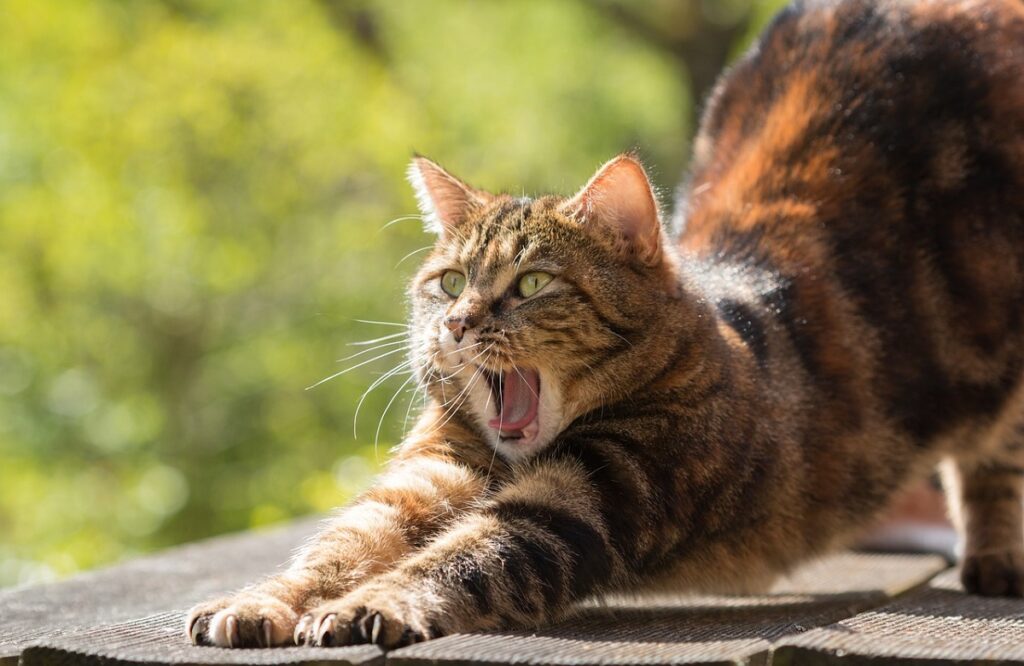
Cats Follow a Ritual of Allogrooming (BBC Science Focus)
Their tongues are like sandpaper. It’s their own personal grooming system. Cats lick themselves and other cats for several reasons:
- Spreads their natural oils.
- Removes mats and foreign materials
- Keeps them clean
- Forms bonds with other cats
- Aids in the removal of parasites
- Mothers groom their kittens to stimulate, teach, and groom them
- It can signal where areas may be unhealthy.
30-50% of a cat’s day is given to allogrooming. (source)
The Purring Sound of a Cat Indicates a Self-Soothing Behavior. (Codornices Veterinary Clinic)
Not only to communicate contentment/happiness, experts believe that cats purr as it can be self-soothing for them. It can alleviate stress or separation anxiety. (source)
When Boredom Hits a Cat, It Attacks Your Ankles. (Cat Behavior Associates)
If your house cat is bored and has little stimulation or active playtime, it will look for opportunities to pounce. If that’s on you, so be it. According to Cat Behavior Associates, the prey drive is triggered by objects moving across or away from the cat’s visual field. (source)
When a Cat Puts Its Rear End to Your Face, It’s a Sign of Trust and Comfort. (Cat Health)
Cats often hold their tails up when meeting other cats who might take a sniff or just rub against each other. Scent glands are powerful communicators in cats. So if one sticks its, um, backside towards you, it’s a sign that you’re in the club. (source)
Numerous Cats Have a Tendency to Lick Their Owner’s Freshly Washed Hair. (WebMD)
If you’ve heard of a cat marking its territory, experts believe that is one reason why they lick their guardians. They also love to groom someone they call their own. (source)
Male Cats Attempting to Reach a Female in Heat Can Exhibit Highly Unusual Behavior. (Edgewood Vet Group)
Ever heard a female cat meow while it’s in heat? Then you know it can sound like it’s in pain or quite disturbed. While in this condition, females tend to get “flirtatious” and look for extra attention from you, while males fight, spray, roam, or become extremely pushy/demanding. Please spay and neuter your kitties. (source)
Cats Often Display Thieving Behavior. (Cat Behavior Associates)
This is a way for them to play if they’re not getting enough attention. But it can be dangerous, even life-threatening if a cat swallows string, an earring, or some other foreign object. Act like you have a toddler, keep things off the floor (and counters!), and try to only keep appropriate toys available. (source)
Cats Consider Their Owners as Their Territory. (National Geographic)
This behavior is in a cat’s nature…sort of hardwired. They sometimes act towards us as they would or did act towards their mothers. Raising its tail, kneading, rubbing, and purring are all actions they’re probably been given by a feline mother. (source)
If Cats Don’t Cover Their Poop, It Suggests They’re Not Afraid of You and Might Be Expressing Aggression. (VetStreet)
It’s not known for sure, but there are a few other reasons why cats don’t cover their eliminations:
- Cats have no discipline and “run the household.”
- Some cats/kittens never learned to do it.
- A dominant cat may be saying, “I’m here. This is my territory.”
- They may not like the particular litter or box.
- It may be too dirty. (source)
Facts About Cats
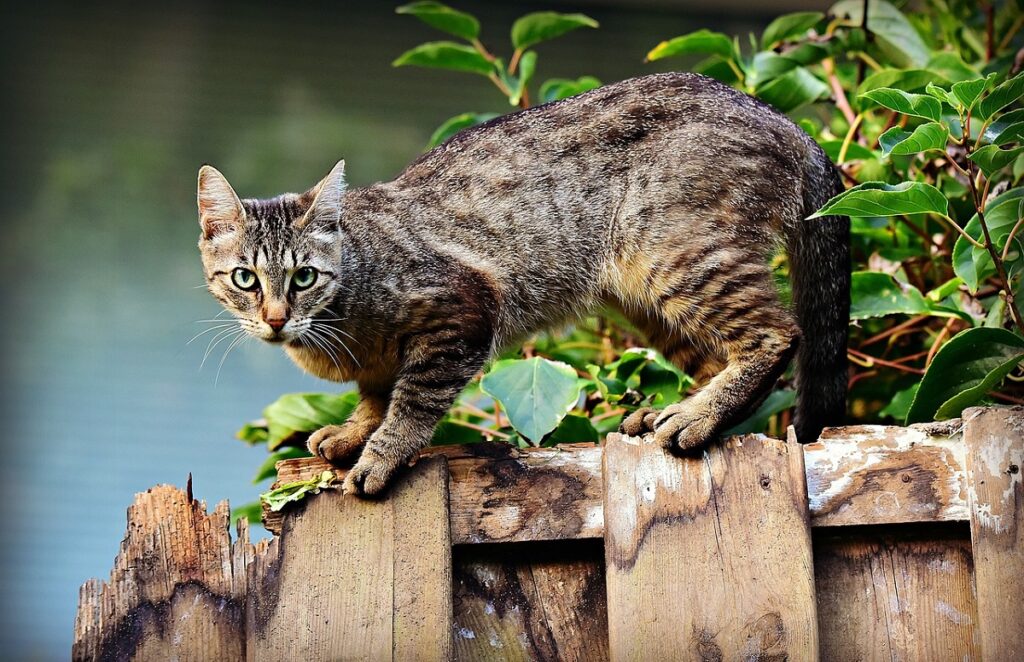
Cats Were Introduced to the Americas During Colonial Times to Control Rodent Populations. (World History)
Until cats became valued as popular pets in the 18th century, they were on mouse patrol in houses and barns. 1685-1815 – The Age of Enlightenment – This period saw people treating cats as if they were only to be tolerated, which was before the age of embracing domesticated cats into our homes. (source)
Around 40 Percent of Cats Show a Left or Right Paw Preference, with Some Being Ambidextrous. (NCBI)
Yes, there have been studies on this, and what has been found is that:
- 49.5% of cats preferred their right paw
- 44% their left
- 11% were ambidextrous (smarty pants)
Male and female cats were studied using food. (source)
Similar to Human Fingerprints, Each Cat Possesses a Distinctive Nose Print. (Morris Animal Inn)
(This is rather adorable. But I digress.) A cat’s nose has unique patterns of ridges and bumps, which kind of makes them have their own fingerprints. (source)
The Purr Vibrating Frequency of a Cat Is 25 to 150 Hertz. (Wildlife Conservation Network)
It’s not nonsense that a cat’s purr is highly comforting. And the scientists agree. Electromagnetic devices with the same frequencies as a purr have been shown to non-invasively treat bone healing, inflammation, wound healing, osteoarthritis, and more. This was in cats, dogs, and humans. (source)
Black Cats in Shelters Are Adopted Less and Euthanized More Than Other Cats. (Bcarl.net)
Worldwide, black cats have been seen as bad luck or evil. To this day, in America, there are still people who pass over black cats in rescues. (source)
Fun Facts About Cats

The Learning Style of a Cat Is Similar to That of a 2-3 Year Old Baby. (Facts Squirrel)
Many domesticated cats have behaviors that mimic those of human babies. These caretaking behaviors can result in deep attachments between humans and their cats. (source)
All Scottish Fold Cats Can Be Traced Back to the First One Found in Scotland in the 1960s. (Scottish At Heart)
The unique ears of the Scottish Fold gave them their name. Susie was the name of the original kitty in the 1960s. Their ears fold forward in a unique fashion. (source)
Creme Puff, the Oldest Cat Ever, Lived for 38 Years and 3 Days. (Guinness World Record)
Creme Puff was the cat of a man who lived in Texas. His previous cat, Grandpa Rex Allen, was declared the oldest cat before he died. (Wonder if he fed them Popeye-tuna.) (source)
1 Year of Cat Life Equals 15 Years of Human Life. (International Cat Care)
During their first two years of life, cats age faster. So if your cat lived to be 12 years old, in human years, he would be 64. Thank goodness that doesn’t apply to us. (source)
Cats Make Biscuits by Kneading Due to Learned Comfort from Kittenhood. (Oakhurst Vet Hospital)
We’ve all probably seen cats as they press in and out rhythmically as they purr like a car’s motor. This is known as kneading since it resembles a baker manipulating bread dough. (source)
Cats Have Scent Glands in Their Paws for Sharing Info When They Meet New Cats. (Cat Care Center of Baton Rouge)
Your cat claws has tiny glands on all four paws called interdigital glands that give off a scent when the paw is stretched out. It helps them mark their territory and introduce themselves to other cats. (source)
Interesting Facts About Cats
Maria Assunta Left Her $13 Million Fortune to Her Cat Tomasso Upon Her Death in 2011. (University of Florida)
Ms. Assunta died at the age of 94 and had no children. Her 4-year-old stray cat was rescued from the streets of Rome. The feline’s gifts included cash and properties in Milan, Rome, and Calabria. (source)
Abraham Lincoln Was a Cat-Loving President as He Shared the White House with Four Cats. (Smithsonian Magazine)
Secretary of State William Seward gave the president two kittens he named Tabby and Dixie. Historian-in-residence at the Presidential Pet Museum, Andrew Hager, believed the first cats in the White House likely had no names. (source)
Talkeetna, Alaska’s Historic District, Is Overseen by Mayor Stubbs, a 17-Year-Old Orange Tabby Cat. (Alaska’s News Source)
The honorary mayor of this unincorporated community was in office for almost 20 years. People even moved to the town because of their curiosity. (source)
President Bill Clinton’s Cat, Socks, Garnered Media Attention and Received More Letters Than the President. (The New York Times)
Someone even gifted the feline a kitty litter box that sat inside a miniature replica of the White House. Socks even responded with postcards along with his “signature” in the form of paw prints.
The Wealthiest Cat, Blackie, Had a £7 Million ($12.5 Million) Fortune. (Guinness Book Record)
Back in 1988, Ben Rea left nearly $13 million to Blackie, which was split among 3 cat charities who took care of kitty. When the famous Chanel fashion designer Karl Lagerfeld died, he left his tortie cat $1.5 million in 2019. Although Blackie would be extremely old today, no one knows his whereabouts. (source)
The Oldest Recorded Pet Cat Lived Approximately 9,500 Years Ago. (National Geographic)
This long-lived feline was found buried with its guardian on the island of Cyprus. It really shows how much cats have been and are adored by their humans. (source)
In Ancient Egypt, Cat Deaths Led to Family Members Shaving Eyebrows. (Ancient Origins)
It’s long been known that ancient Egyptians respected and worshipped cats. So much so that guardians changed their appearance drastically when a cat died. (source)
In Scotland, a Tower Has Been Constructed in Honor of a Cat Named Towser. (Atlas Obscura)
Towser was so good at her job, killing 28,899 mice during her lifetime (24 years). The tower was created by a Scottish artist. She holds the record as the world mousing champion. (source)
Weird Cat Facts
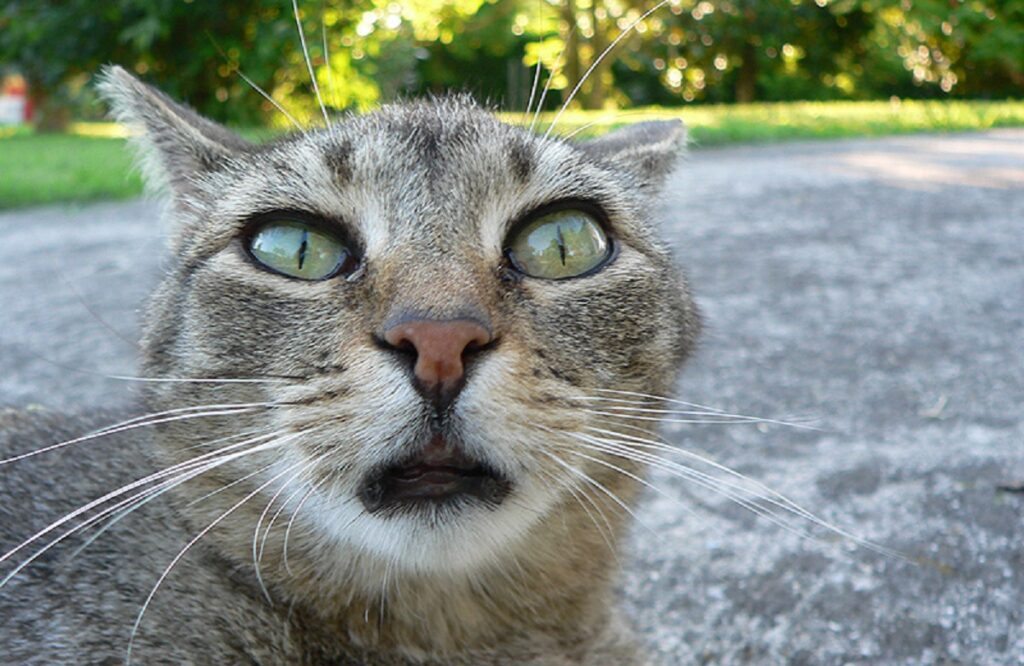
Cats Are the Only Mammals Who Don’t Taste Sweets. (Scientific American)
There has yet to be a mammal with this same characteristic. Most mammals’ tongues have taste receptors. (source)
Cats Are Mostly Lactose Intolerant. (WebMD)
Want to give a stray cat milk? Probably not a great idea. Water is a better option — For house cats, too. (source)
A Cat’s Walking Pattern Is Similar to That of Camels and Giraffes. (Pasadena Star News)
Cats walk on their toes and move by simultaneously moving the front and back legs on one side and then the other two on the opposite side. This is not like dogs or horses. (source)
Siamese Cats Have Albino Genes That Function at 36°C Body Temperature. (NCBI)
Researchers from the University of California found that Siamese cats have an unusual mutation in a protein called tyrosinase. They can only produce the pigment melanin at temps from 36°C to 39°C. (source)
Random Cat Facts
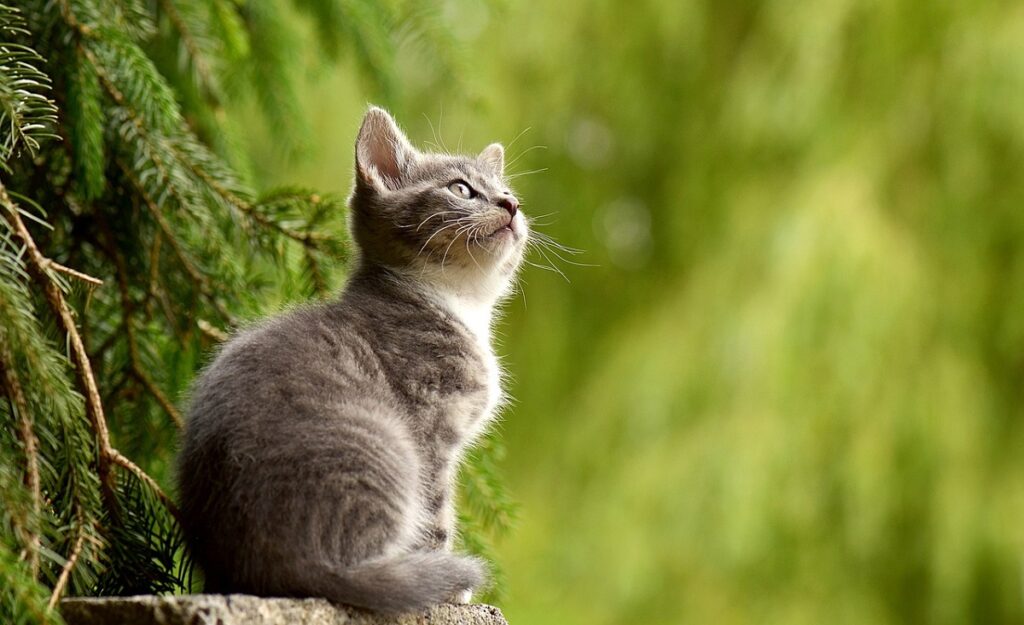
A Green Cat Was Born in Denmark in 1995, Possibly Due to High Copper Levels in Nearby Water Pipes Affecting Its Fur Color. (Scottish Big Cat Trust)
“Miss Greeny” was famous for a while until the kitten molted her coat, making room for new fur. Her green fur vanished when she stopped drinking the copper-infused water, which is often toxic. (source)
In 1963, a Cat Was Sent to Space. (Royal Museums Greenwich)
Felicette was the cat the French sent into space in 1963. She had electrodes implanted in her head in order to be observed. She was weightless for five minutes and reached an altitude of 100 miles. (source)
Disneyland Resort in Anaheim, CA, Houses Feral Cats That Roam Freely. (The Cats of Disneyland)
At Disneylandcats.com, in a tongue-in-cheek style, the first part of the website is written by the cats. Not really, of course, but that’s how Disney rolls. There have been sightings of roaming cats there since 1955. The current cat population on Disneyland property is around 200. (source)
Cool Facts About Cats
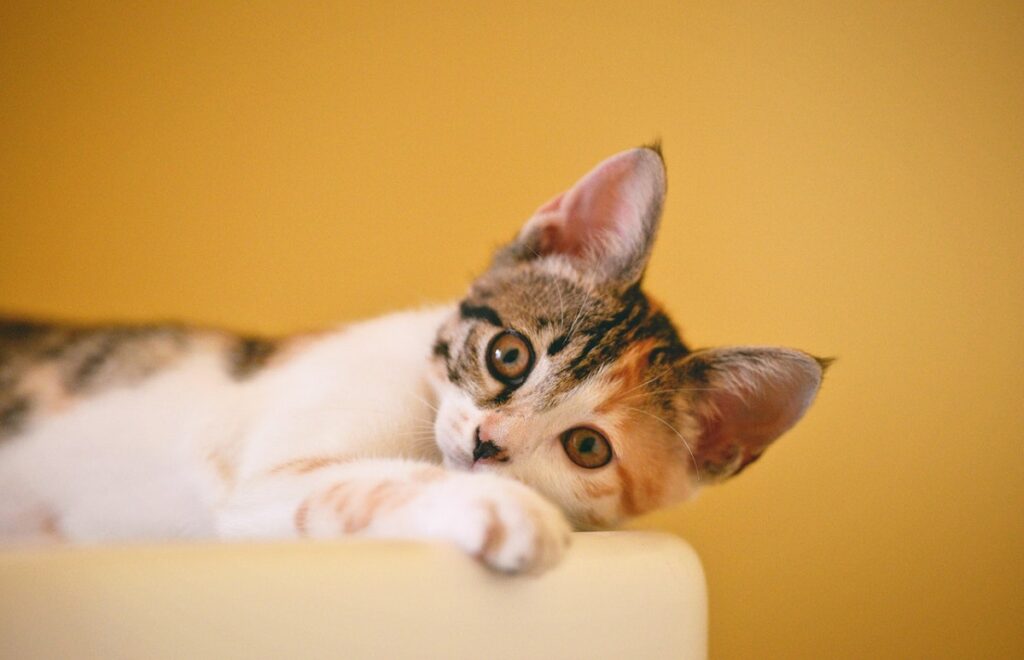
Cats Have 32 Muscles in Each Ear. (PetMD)
In comparison, humans have six muscles. The 32 cat muscles allow them to rotate their ears 180 degrees. They can express themselves with them and hear distant sounds clearly. (source)
Cats Have 53 Loosely Fitting Vertebrae, Which Grants Them Remarkable Spinal Flexibility. (Catonsville Cat Clinic)
Watching a cat bend itself into positions we could never imagine is often humorous. It’s because muscles attach a cat’s shoulder blades rather than bone. (source)
The Record for the Loudest Purr Stands at 67.8 Decibels. (Guinness World Records)
Smokey, owned by Lucinda Ruth Adams (UK) at Spring Hill farm, is/was a domestic cat. It made the record of loudest purr while at home. (source)
Cat Whiskers Serve a Vital Role in Aiding Their Navigation, Particularly in Low Light. (Medium)
Whiskers allow cats to sense changes in airflow and actually send signals to the brain. Information is transferred about the shape and size of objects, which helps them navigate. (source)Alexis the cat can execute 26 tricks within a single minute. (Guinness World Record)
Alexis’ owner, in Austria, said she wanted to share how amazing cats are. Move over, Felix. This cat’s super smart. (source)
Cats and Humans Share Identical Emotional Regions in Their Brains. (NCBI)
This research proves that cats modulate their behavior via visual and audio signals according to the perceived emotion from humans or other animals. A feline’s socio-cognitive abilities are critical for improving their relationships with others. (source)
Cats Spend Almost One-Third of Their Lives Cleaning Themselves. (Washington Post)
We’ve discussed why they groom themselves, and those reasons take up plenty of time. Add to that, the saliva they transfer to their bodies helps them stay cool in hot weather. When saliva evaporates, heat is released from the body. (source)
FAQs
What Are Cats Known For?
- Independence
- Agility
- Purr/Meow
- High jumps
- Hunting ability
- Love of sleep
- Companionship
- “Making biscuits”
How Fast Can a Cat Run?
Cats can run up to 30 miles per hour. But each cat is also unique, so running speed can depend on a cat’s age, breed, health status, age, and motivation. (source)
How Many Cats Are in the World?
There are 300-600 million cats in the world.
How Many Feral Cats Are in the US?
Between 50-70 million roam freely.
Conclusion
If you’ve learned a little something about these fabulous animals, we’ve done our job. Cats are woven into America’s society and many places around the world so tightly we couldn’t imagine life without them.
If you’re a cat lover, salute! If you’re not, hopefully, these cat statistics have piqued your interest in them. You might even be able to teach someone else about their awesomeness… Unless the cat’s got your tongue!


